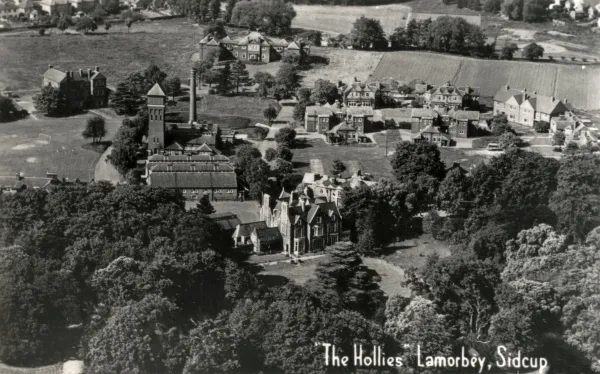
HTL History
Holy Trinity Lamorbey has a long and proud history...
In 1838 a day school was conducted in a cottage in Halfway Street. 1841 saw the building of a new school in Burnt Oak Lane. As the need for education grew, so a National School was built. This building is still in existence in Hurst Road but is now the parish church hall. In 1968 the first part of the present school in Burnt Oak Lane was opened. The school has subsequently been expanded to two forms of entry.
The school’s most famous alumnus is Sir Quentin Blake. Sir Quentin was admitted to Holy Trinity Lamorbey CE Primary School in 1938 and attended in the building that is now the church hall on the corner of Hurst Road. In 1939 Sir Quentin was evacuated to Beer in Devon before re-enrolling at the school in 1940. He left Holy Trinity Lamorbey in 1943 to attend the ‘County School’, now better known as Chislehurst and Sidcup Grammar School. The school still has the original handwritten register of Sir Quentin’s admittance to the school as well as dozens of school photographs dating back to the early 1950s.
The school was badly damaged by enemy action during the Second World War when a bomb struck nearby Old Farm Avenue. The school still possesses the note of the event in the head teacher’s log as well as minutes from discussions of the Governing Board pertaining to the repair of the building.
In September 2015, Holy Trinity Lamorbey CE Primary School became an Academy and part of the Amadeus Primary Academies Trust.
The following has been compiled from historic records in school and is the best estimate. If you know of any inaccuracies or can provide further information, please let the school know.
- 2022 - present Oliver Winstone
- 2016 - 2022 Adam Twyman
- 2008 - 2015 Robin Aldcroft
- 1993 - 2008 Keith Macklay
- 1975 - 1993 Margret Lidbetter
- 1955 - 1975 James Bridge
- 1952 - 1955 Miss Jordan
- 1949 - 1952 Mrs Osborn (nee Capon)
- 1931 - 1949 Mrs Bolton
- ? - 1931 Mr Watts
History of the School
In 1811, the National Society (Church of England) for the Promotion of Religious Education was founded to provide education for the children of the poor. By 1850, it was estimated that approximately 17,000 schools had been established by the Church. State provision of education to fill the gaps did not begin until 1870. It was not until 1944 that church schools were brought into the state system by either opting for greater state funding and control (Voluntary Controlled) or less state funding and greater independence (Voluntary Aided). Foundation governors form a link between the school's original benefactors and the present day. They have the special legal responsibility to ensure that the distinctive character of the school as a Church of England school is preserved and developed so that the school is recognisably Christian. Foundation governors also ensure that the school has good links with Holy Trinity, the local parish church, and Rochester Diocese. It is important that the church sees its local school as part of its mission, and is willing and keen to be involved.




